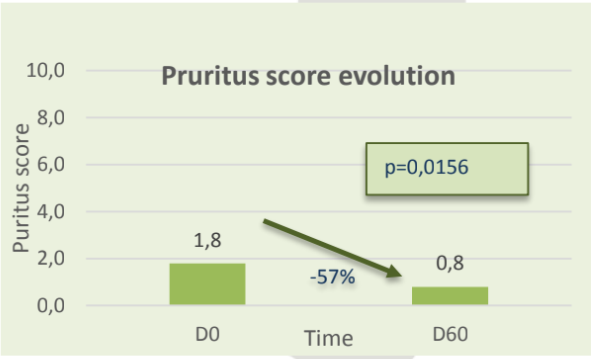Tolerance of a new insect protein-based diet designed for food allergies in flea bite-allergic dogs: a case series

Introduction
In allergic dogs Cutaneous Adverse Food Reaction (CAFR) is a frequent condition (reported median of 20%) (1) and so should be assessed before others.
Pruritus of the distal limbs, face, ear and ventrum are common clinical manifestations of CAFR and can be associated with gastro intestinal signs. Elimination diets are still considered as the gold standard to diagnose such affection and will be distributed exclusively for 8 to 12 weeks (2). They will be based either on commercial hydrolysed diets or on naïve sources of proteins and carbohydrates (based on diet history of the animal). Moreover we know that atopic dogs are also frequently flea-bite allergic (3). This study aimed to assess the absence of clinical cross-reactivity of a new mealworm protein-based diet (VETERINARY HPM Hypoallergy Insect, Virbac, Vauvert, France) in flea bite-allergic (FBA) dogs.
Materials and Methods
Animals:
We recruited seven asymptomatic dogs previously diagnosed with FBA. All of them had positive Intra Dermal Testing to flea saliva (immediate or delayed hypersensitivity reaction) and were only treated with parasiticides. After one week transition with their previous meal, all dogs were fed the mealworm diet for 2 months.
Analysis:
Skin lesions and pruritus manifestations were graded on Days 0 and 60 with the CADESI-04 and the PVAS10; these were compared by matched t-test and Wilcoxon test, respectively. Owners also rated the coat condition (scales and smell) and grooming habits (itching and licking/nipping) as “strongly deteriorated, deteriorated, unchanged, improved or strongly improved” at the same timepoints.
Results:
On D60, the mean CADESI-04 and PVAS10 scores were not worsened and had even decreased by 46% (12.9 ± 5.2 to 7.3 ± 4.5, P = 0.0006) and 57% (1.8 ± 0.3 to 0.8 ± 0.4; P = 0.0156), respectively. Three of 7 (43%) and 4/7 dogs (57%) had a greater than 50% improvement in CADESI-04 and PVAS10 scores, respectively. Scales and coat smell were both strongly improved for 63% of owners and had not changed in the others. Scratching and licking/nipping were strongly improved for 100% and 75 % of dogs, respectively.
Two dogs developped a pododermatitis or otitis that spontaneously resolved without treatment or diet change. Adverse effects were not observed.
Conclusions:
These observations support the absence of clinical cross-reactivity of this insect diet in dogs with FBA.
